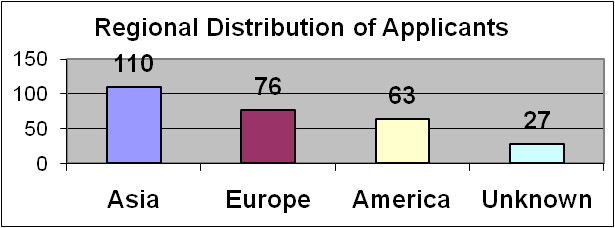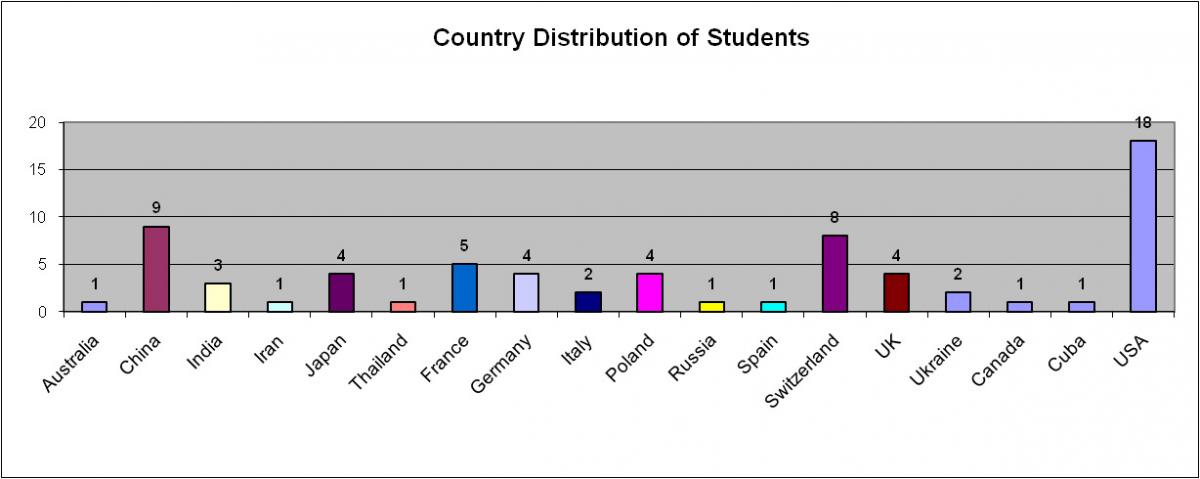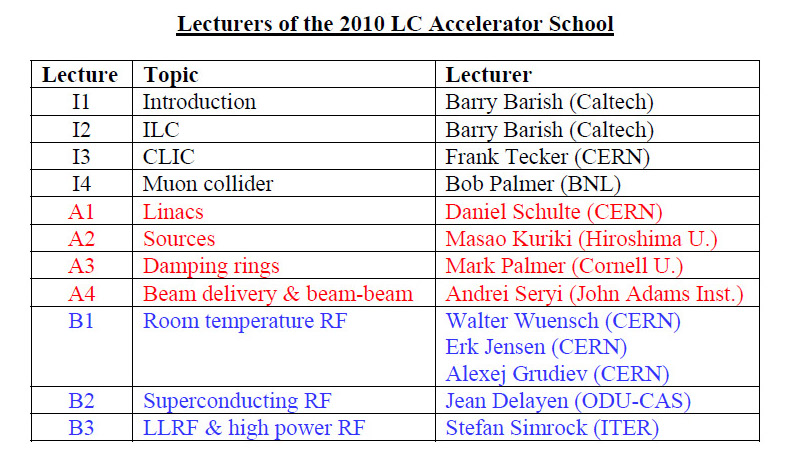Director's Corner
5 August 2010
 Barry Barish |
Students admitted to the fifth Linear Collider accelerator school
This year we have again had a very big demand and many qualified applicants for the "Fifth International Accelerator School for Linear Colliders." This year's school will be held from 25 October to 5 November 2010 in Villars-sur-Ollon, Switzerland, continuing the tradition of cycling the school between Europe, Asia and the Americas. The focus of the school will be on accelerator science related to the next-generation TeV-scale colliders, including the International Linear Collider (ILC), the Compact Linear Collider (CLIC) and the muon collider.
 The distribution of applicants for the 2010 LC accelerator school The distribution of applicants for the 2010 LC accelerator school |
 The distribution of countries of the admitted 70 students for the 2010 LC school The distribution of countries of the admitted 70 students for the 2010 LC school |
We have selected 70 highly qualified students from an increased pool of 276 applications for the 2010 school. We received applicants from 44 countries, of which 72% were from countries having programmes in high-energy physics. The country distribution of the accepted students includes 19 from Asia and Oceania, 31 from Europe and 20 from North and South America. These students will be divided into two classes: Class A (44) for accelerator physics and Class B (26) for radiofrequency (RF) technology. Dividing the class, following introductory common lectures into two tracks was introduced last year and enables a more in-depth school and opens the possibility of accepting some returning students, of which we will have five this year.
The organisation of the Linear Collider accelerator school is done jointly by the Global Design Effort (GDE), the Compact Linear Collider (CLIC) Study and the International Committee for Future Accelerators (ICFA) Beam Dynamics Panel. The continuing popularity and success of the school clearly indicates the important need for providing advanced training in accelerator science for the high-energy physics community. There are very good opportunities in this field, even in these difficult financial times, as was highlighted in a recent article "A Field where Jobs Go Begging" in symmetry magazine. Particle physics has been responsible for much of the development of particle accelerator science because of our own need for new accelerators for our research and therefore our investment in advanced accelerator R&D.
The attendees at the LC school are graduate students, postdoctoral fellows and junior researchers from around the world, including physicists who are considering a career change from experimental physics to accelerator physics. The subjects from accelerator dynamics to superconducting RF are forward-looking subjects in the field with many possible applications beyond the next-generation Terascale lepton colliders. The curriculum will contain an overview of the different future collider options and a lecture on linac basics, followed by a choice of two in-depth tracks: one on damping rings, linacs and beam delivery system; and one on superconducting and warm radiofrequency technology, low-level RF and high-power RF.
We are set to have another very successful LC accelerator school this year. We have excellent lecturers, well-qualified students, an in-depth curriculum and a beautiful site for the school. I am happy to be able to once again be able to personally participate. I will be giving both the introductory lecture on high energy physics and the lecture on the International Linear Collider.
-- Barry Barish
